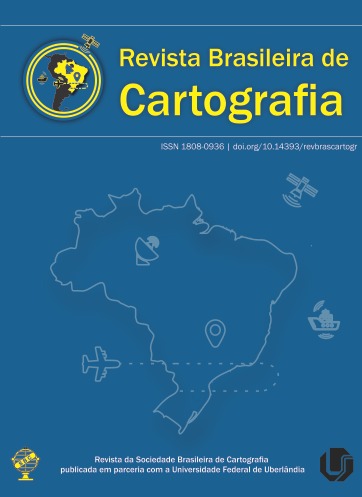Velocities Determination of RBMC Stations Using the SARI Software
Main Article Content
Abstract
Lengthy GNSS (Global Navigation Satellite System) coordinate time series are now widely used to assess a variety of Earth deformation processes due to the improvement of GNSS accuracy and the installation of large networks of continuous operation. Therefore, a task that has come to be widely used is the determination of station velocity of the continuous monitoring networks, having several applications in geodesy. The velocity components of a station can be determined in a simplified way, as a result of a simple linear regression, assuming that the behavior of a station's velocity responds to a linear model. However, to obtain more precision, it is critical to consider that the velocity of the season is not only related to the trend, but also as a function of seasonality and noise. It is common to assume the presence of white noise in a time series of GNSS coordinates, however, it is important to study power-law noise to determine the type of noise in each series. Thus, this study aimed to determine the velocity of stations considering trends, seasonality, and types of noise present in the series. The studies were carried out from 94 stations belonging to RBMC (Brazilian Network for Continuous Monitoring of the GNSS Systems), post-processed in the IBGE-PPP (Brazilian Institute of Geography and Statistics - Precise Point Positioning) online service and analyzes of the series of coordinates performed in the SARI (Señales y Análisis de Ruido Interactivo) software. The results indicate no significant differences in obtaining the planimetric velocity of the stations when seasonality is neglected. The research also conveys that the noise analysis does not affect the velocities of the stations analyzed.
Downloads
Metrics
Article Details
Authors who publish in this journal agree to the following terms:
- Authors retain copyright and grant the journal right of first publication with the work simultaneously licensed under a Creative Commons Attribution License that allows others to share the work with an acknowledgment of the work's authorship and initial publication in this journal.
- Authors can enter into separate, additional contractual arrangements for the non-exclusive distribution of the journal's published version of the work (e.g., post it to an institutional repository or publish it in a book), with an acknowledgment of its initial publication in this journal.
- Authors are permitted and encouraged to post their work online (e.g., in institutional repositories or on their website) before and during the submission process, as it can lead to productive exchanges, as well as earlier and greater citation of published work (see "The Effect of Open Access").





